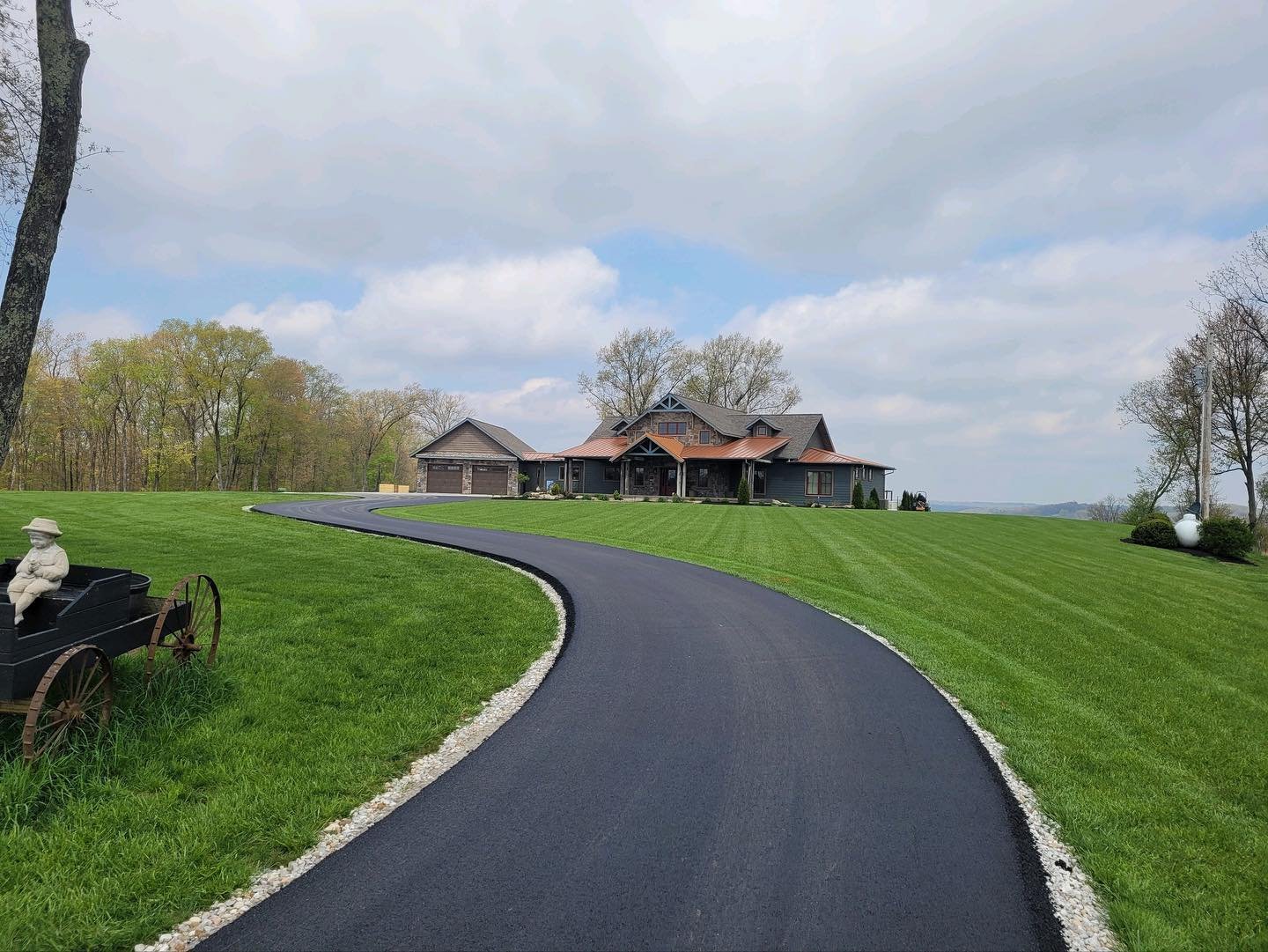Our Services
Asphalt Paving involves laying down a fresh layer of asphalt over a prepared foundation and base to create a new driveway or roadway. Asphalt can also be laid over pre-existing asphalt to cover up cracks and pits in the roadway or driveway, providing a fresh, new look. This is called resurfacing and can only be done when the surface is damaged but the integrity of the asphalt's foundation is sound.
Using asphalt for yout driveway, roadway, or parking lot creates a beautiful surface to drive on that is both durable and cost-effective. With a proper management plan, asphalt can last for many years. When it does begin to fall apart though, asphalt resurfacing is a less expensive alternative to completely replacing your asphalt. It is used when sealcoating and crack filling aren't enough to completely repair your asphalt, but the base is still stable and has proper drainage.
Sealcoating
Crack Sealing is the first step in asphalt maintenance. Special types of asphalt materials are spread over cracks that have formed due to freezing and thawing water, high traffic, or aging. Sealing these cracks helps keep moisture out and can significantly extend the life of your asphalt.
Before the crack sealant is applied, the cracks are cleared of grass and other debris. Crack Sealing is the cheapest form of asphalt maintenance, however, it will not fix cracks formed from foundation problems, only cover them up.
Reclaiming us the process grinding up and pulverizing your old asphalt or aggregate roadway, and then leaving it in place. This material is then graded and rolled for compaction, and then used as the base for a fresh, new layer of asphalt or other wearing course.
Reclaiming is used when resurfacing is not possible due to a damaged foundation or poor drainage. This process is environmentally friendly because materials are being reused as a new roadway foundation.
Reclaiming
Asphalt Paving
Sealcoating is one of the most important services in asphalt maintenance. The process involves applying a layer of sealant to asphalt. This layer will protect the surface of the asphalt against damaging elements, such as water, oil, gasoline, salt, and ultraviolet rays from the sun. These elements can degrade the surface of the asphalt. In addition, seal coating provides a slip resistant surface for vehicles, along with a rich, black finish that brings new life to any driveway or parking lot.
Sealcoating is not a fix for already damaged asphalt, but rather a preventative measure to reduce the likelihood and severity of issues in the future. Sealcoating should be applied once asphalt begins to lose its dark black color; around one or two years after the asphalt has been laid. A proper sealcoating and maintenance plan can extend the life of asphalt by 10 to 20 years.
Crack Sealing
Chip & Seal is the application of a layer of liquid asphalt and stone onto existing roadways. This fills and seals cracks in old asphalt pavement, which helps prevent water from penetrating the pavement and causing it to deteriorate. In addition, chip and seal is highly skid resistant and provides a non-reflective surface during wet weather and night driving. The main draw of chip and seal is that it provides a functional driving surface at a fraction of the cost of other paving options.
In the process of chip and seal, an oil truck will drive down the pavement, spraying a thin layer of emulsified asphalt. Then, a chip spreader and dump truck will drive down the road, spreading a layer of stone, which is then rolled with rubber tired rollers for compaction. Although the new surface needs time to cure, traffic is able to drive on the new surface at reduced speeds.
Chip & Seal
Motor paving is a relatively low cost method of paving low-volume roadways, that can be easily repaired should it be damaged. Motor paving asphalt is a very flexible material that is more durable and cheaper on low-volume roadways than traditional hot mix.
It’s made by mixing stone with asphalt oil and spreading it on the surface of the road. This is then rolled for compaction, covered in another layer of crushed stone, and rolled again. The roadway can be open to traffic as soon as the material is compacted, providing low down-time for the road.
Motor Paving
Asphalt planing is the removal and recycling of a layer of existing pavement in order to correct any deformities or issues that may have arisen due to weathering or aging. This allows for a fresh surface to be applied, providing a fresh, new look to a roadway or driveway. The layer of removed asphalt is called RAP, which stands for recycled asphalt pavement, and can be reused in other asphalt mixes.
Asphalt Planing is used whenever pavement height needs to be adjusted to facilitate better drainage or to remove pavement damage that can't be fixed through just crackfilling and sealcoating.







